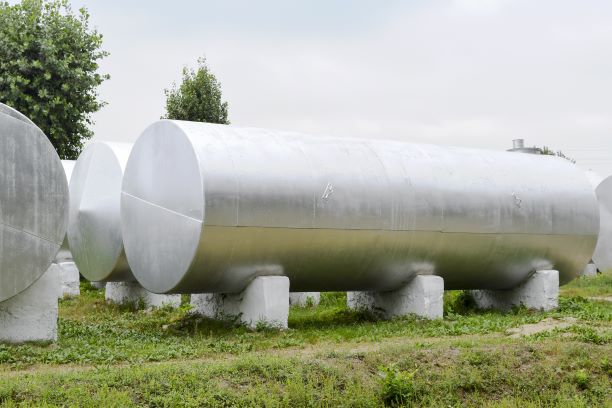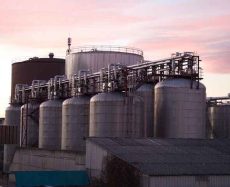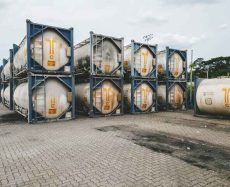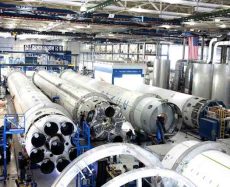
- admin
- June 11, 2021
Tips for Inspecting Your Aboveground Storage Tank
Regardless of whether they are used to store petroleum products, hazardous waste, or other dangerous materials, aboveground storage tanks (ASTs) remain aboveground. ASTs are governed by a slew of overlapping federal rules and regulations, and the majority are heavily regulated at the state and municipal levels.
Hazardous waste tanks have special inspection requirements, which we will cover in a future Advisor. The Spill Prevention, Control, and Countermeasure (SPCC) guidelines also regulate federal inspection requirements for aboveground storage tanks.
The only other government requirement that governs AST inspections is to those that store petroleum. This inspection requirement states that on-site tanks (i.e., field-erected tanks) must be internally inspected every 10 years and externally examined every 5 years by a certified API 653 inspector in accordance with American Petroleum Institute (API) Standard 653. However, it is always advisable to check with your state and local agencies given that many have stricter AST inspection requirements.
Regardless of whether it is necessary or not, inspecting your aboveground storage tanks on a frequent basis is a good practice. Keeping monthly monitoring data has been suggested by some.
Here are a few things to check for while inspecting your aboveground storage tanks:
- Make sure that corrosion protection controls are present and functioning properly (e.g., paint, cathodic protection).
- Look for evidence of corrosion, damage, and failure in the tank, pipes, pumps, and valves (e.g., leaks). Examine the filling region, the dispensing region, and the underside of the tank.
- Ensure that spill and overfill protection controls are in place and working properly (e.g., reservoirs, catchment basins for use during tank filling).
- Examine whether vapor recovery equipment is present and in good working order.
- Ensure that the ground and concrete surfaces are free from any evidence of leaks or spills.
- Examine whether or not overfill prevention equipment is present and in excellent working order (e.g., automatic alarms or shutoff equipment).
- Make sure that all fire-fighting and emergency-response equipment is present and in excellent working order (e.g., fire extinguisher, phone, fire alarm, spill control equipment).
- Verify that the secondary containment system is operational and in good working order.
- Make sure the secondary containment system is clean of tank product and other liquids/debris as well (e.g., rainwater, snowmelt, dirt, leaves, trash, stored materials).
- Ascertain that the general vent is present and in good working order.
- Interstitial monitoring should be tested at least once a month.
- Ensure that the equipment for detecting and monitoring releases is present and in excellent working order.
- Ascertain that all electrical equipment and static controls are present and in working order.
- Ensure that all tank valves and equipment are set up, secured, and locked properly.
- Verify that the proper signage is in place.
- Check that written operating instructions are available.
Select the right aboveground storage tank
Size and placement aren’t the only factors to consider when purchasing an aboveground storage tank; in fact, they’re not even the first. Before deciding on the size of the tank or where it will be placed, you must first decide on the material it will be made of. You also need to make sure that the aboveground storage tanks you are paying for are worth it. Hence, get in touch with GSC Tanks to ensure that you get the best quality aboveground storage tanks in the USA.
- aboveground storage tank
Category
- Above Ground Fuel Tanks
- Above Ground Gas Storage Tank
- Above Ground Storage Tanks
- Above Ground Water Storage Tanks
- Agricultural Tanks
- Chemical storage Tanks
- Diesel Fuel Storage Tanks
- Diesel Storage Tanks
- Exernal FloatingRoof Tanks
- Farm Water Tank
- Fiberglass Oil Tanks
- Fiberglass Septic Tanks
- Fiberglass Underground Fuel Storage Tanks
- Field Erected Tanks
- Floating Roof Tank
- Fuel tank
- Industrial Chemical Storage Tanks
- Industrial Gas Tanks
- Industrial Plastic Tanks
- Industrial Storage Tanks
- Industrial Tank heating pads
- industrial tanks
- Natural gas
- Natural gas vs Propane
- oil storage tank
- Oil Storage Tanks
- Peracitic Acid
- Petroleum Tanks
- Residential gasoline storage tanks
- Residential Water Storage Tanks
- Sodium Hydroxide Storage Requirements
- Sodium Hypochlorite Storage Tanks
- Steel Storage Tanks
- storage tank failure prevention
- Storage Tanks
- Sulfuric Acid Tanks
- Uncategorized
- UnderGround Storage Tanks
- Water Storage Tanks

 Tank Size Calculator
Tank Size Calculator






